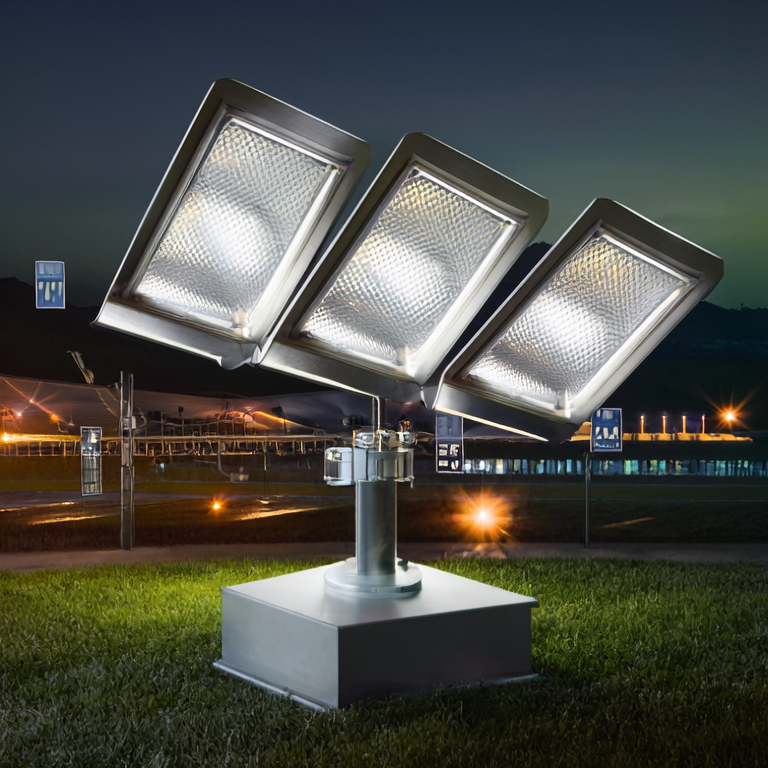5-YEAR WARRANTY
5-YEAR WARRANTY
The lighting industry has seen a significant shift in recent years, especially with the emergence of Flood Lights as a preferred choice for both residential and commercial settings. Flood lights are powerful fixtures designed to illuminate wide areas with high-intensity light, enhancing security and visibility. This article aims to explore the role of flood lights in various applications, understand their advantages, and guide you in making informed decisions. With the advent of advanced technology and energy-efficient options, understanding the mechanics behind flood lights can help homeowners and businesses alike make choices that are both effective and sustainable.
Flood lights have become essential for outdoor spaces, commercial properties, and even for sports facilities. Users often face challenges such as insufficient lighting for safety, the need for efficient illumination in large areas, and the desire for energy-efficient solutions that lower electricity costs without sacrificing visibility. By understanding what a flood light is and how it can meet these specific needs, users can optimize their lighting choices for maximum benefit.

A flood light is defined as a broad-beamed, high-intensity artificial light used in various settings to illuminate large areas. These lights are typically mounted on a sturdy structure or pole and are designed to distribute light evenly across an expansive surface. Industry professionals often refer to flood lights with technical specifications like lumen output (a measure of brightness) and color temperature, which define the quality of light being emitted. According to data from the U.S. Department of Energy, modern LED flood lights can produce over 100 lumens per watt, making them significantly more efficient than traditional incandescent bulbs.
Flood lights are versatile and can be used in several fields:
Outdoor Security Lighting: They are crucial for deterring crime and ensuring safety in residential neighborhoods and commercial properties at night.
Sports and Recreation Areas: These lights are extensively used in stadiums, tennis courts, and parks to provide adequate lighting for evening activities, improving visibility by up to 30 feet or more.
Construction Sites: Flood lights facilitate work at night, ensuring that construction crews can see their surroundings clearly, which reduces accidents and enhances productivity.
Event Lighting: They are an integral part of outdoor events, such as festivals and concerts, where extensive areas need to be illuminated to ensure safety and enjoyment for attendees.
Landscaping: Flood lights can enhance garden aesthetics and improve visibility around pathways and driveways, giving homeowners peace of mind.
Flood lights hold several advantages:
High Intensity: As mentioned earlier, modern flood lights offer up to 100 lumens per watt, dramatically increasing visibility in outdoor areas.
Energy Efficiency: LED flood lights consume significantly less energy than older halogen or incandescent models. Reports from the U.S. Department of Energy show that LED lighting can reduce energy consumption for outdoor lighting by 50% or more.
Long Lifespan: LED flood lights can last up to 50,000 hours, meaning fewer replacements and reduced maintenance costs for properties.
Environmentally Friendly: By utilizing energy-efficient technology, these lights contribute to reduced carbon footprints. According to a study by the International Energy Agency, moving to LED technology can reduce global electricity consumption for lighting by 40% by 2030.
Flexible Installation Options: Flood lights come in various designs and can be easily installed in multiple places, making them adaptable for diverse needs.
To maximize the benefits of flood lights, interested individuals should consult user guides that provide specific installation steps and usage recommendations. Choosing a reputable brand like Optilux can ensure that you receive a durable and efficient product suited to your needs. It’s also essential to consider regulations and specific requirements regarding outdoor lighting in your area to ensure compliance and optimal function.
Q: How do I choose the right flood light for my needs?
A: Consider factors such as brightness (measured in lumens), energy efficiency (wattage), and the specific area you need to illuminate.
Q: Are flood lights weather-resistant?
A: Most flood lights are designed to withstand various weather conditions; however, it’s essential to check the manufacturer’s specifications for durability ratings.
Q: Can flood lights be installed on a timer?
A: Yes, many flood lights can be connected to timers or smart home systems that allow for automated on/off functions.
Q: What is the estimated lifespan of LED flood lights?
A: LED flood lights typically last between 25,000 to 50,000 hours, depending on their quality and usage conditions.
By understanding the capabilities and advantages of flood lights, you can make informed choices that not only enhance safety but also add functionality and aesthetic appeal to your outdoor spaces. Consider exploring brands like Optilux for reliable and efficient options in flood lighting.
Previous
NoneNext
Can all flood lights be used outside?